I’ve always thought of the Polaroid Swinger as a toy camera. Polaroid made and sold millions of them back in the 60’s, thanks to an effective marketing campaign which included Ali MacGraw in a bikini and a jingle that was hard to forget. It used Swinger specific medium format (around 2×3″) high speed b&w Polaroid roll film which developed in only 15 seconds. I’ve heard that they produced low quality photos thanks to its single element plastic lens, so I’ve always passed up the opportunity to get one. Until recently.
There it was, sitting on the free shelf at The Camera Store in Calgary. Having modified other Polaroid cameras to use other film formats, my curiosity got the better of me as to whether the Swinger could swing again. I brought it home and quickly found out its limitations: fixed focus with a fixed shutter of around 1/200 and a maximum aperture of around f/16. The only film that could have a possibility of working in this camera was Ilford Delta 3200, which is close in speed to the 3000 ASA film that Polaroid produced.
I installed a fresh set of AA batteries to see if the exposure indicator worked. It’s an odd system – for outdoor photos, you’d squeeze the shutter button and twist it back and forth until the words “YES” showed up in the viewfinder. Apparently, squeezing the shutter turned on a calibrated light, and twisting the knob adjusted the aperture as well as altering the exposure indicator until the ambient light jived with the light bulb and the word “YES” showed up. After examining and measuring the film plane, I determined that 120 film would fit well and the main things to do would be to drill a couple of holes, design 120 spool ends and a wind knob, and figure out what to do with the left side of the film plane, which apparently wasn’t needed for Polaroid film, but would be necessary for holding the 120 film flat.
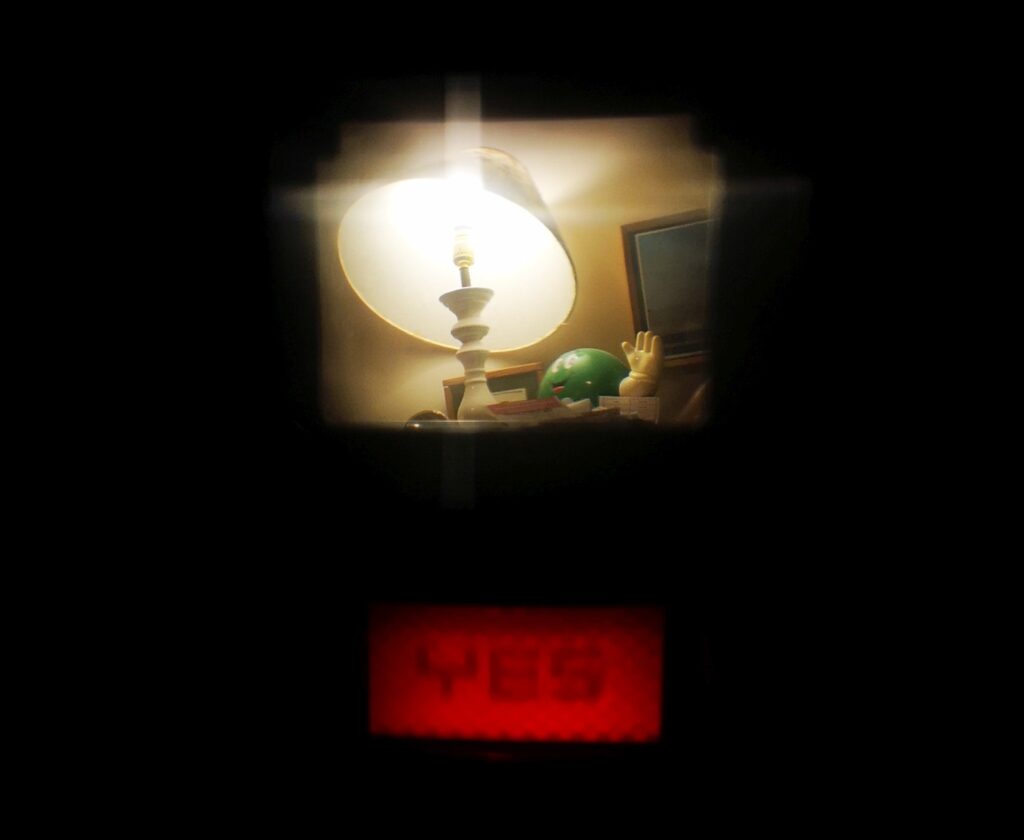
But first, I wanted to see whether this effort would be worth it. I only had ISO 200 4×5 sheet film available, but using the sunny 16 rule, figured it should work in full sunlight with the aperture fully open (f/16) since the shutter speed is 1/200. So I cut a sheet of ISO 200 4×5 sheet film in half and loaded it into the camera, went outside and waited. When the sun peeked out of the clouds I quickly snapped the photo and rushed back to my darkened bathroom to unload the film and develop it. This is about as exciting as analog photography gets. After fixing the film, I pulled it out of the tank and there it was – a negative from a Polaroid Swinger camera!! There was a light leak where original instant film was pulled out of the camera, but the photo seemed well exposed and fairly sharp. A scan left me impressed by this otherwise simple camera. It was worth getting it to work!
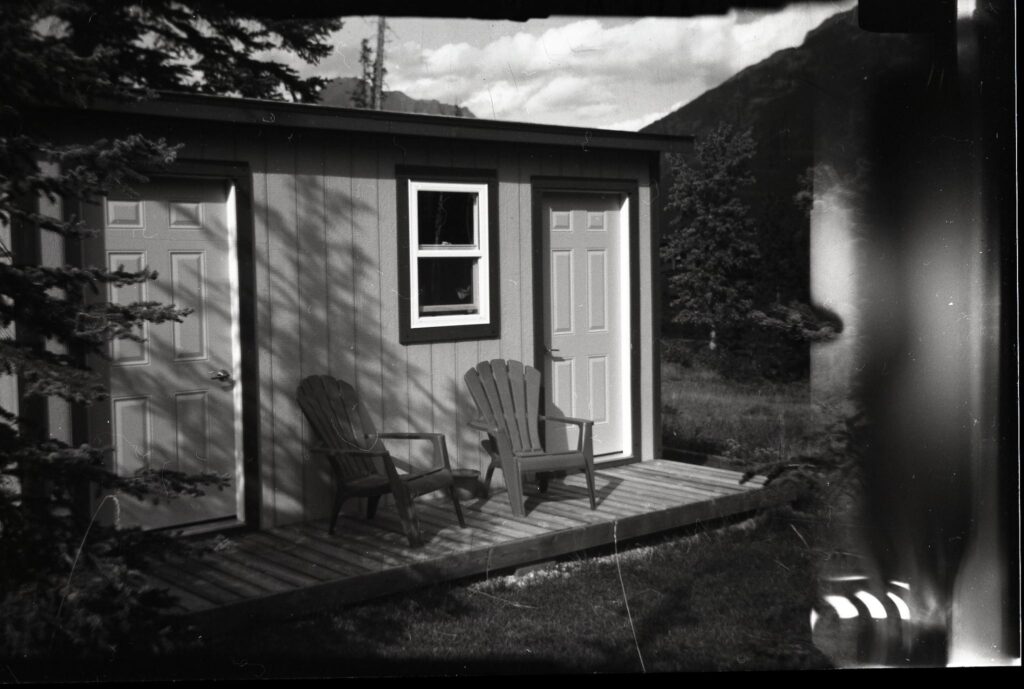
So I designed a partition for the left side of the exposure chamber to fit inside the camera and spool ends to keep the 120 film centered on the film plane (all of which can be downloaded at 120 film modification for Polaroid Swinger). Two tabs which were used to guide the instant film through the rollers needed to be cut off on the door and 2 holes drilled: one in the back for the exposure number indicator and another on top of the camera for the wind knob. It’s always a little nerve racking drilling holes because if you get it wrong, well you really only have one chance. The most difficult is the hole on top for the wind knob. I drilled mine slightly off, so had to enlarge the hole a bit so the wind knob shaft engaged the spool adapter. The hole in the back needs to line up with the 6×9 exposure indicator numbers on the back of the 120 backing paper. The full 120 spool dropped into the left side of the camera, stretched across the film plane, then wound onto an empty spool in the right side. After loading, winding, and unloading a few dummy rolls, then sealing the slit where the instant film pulled out, I loaded the Swinger with Delta 3200 film and headed out.
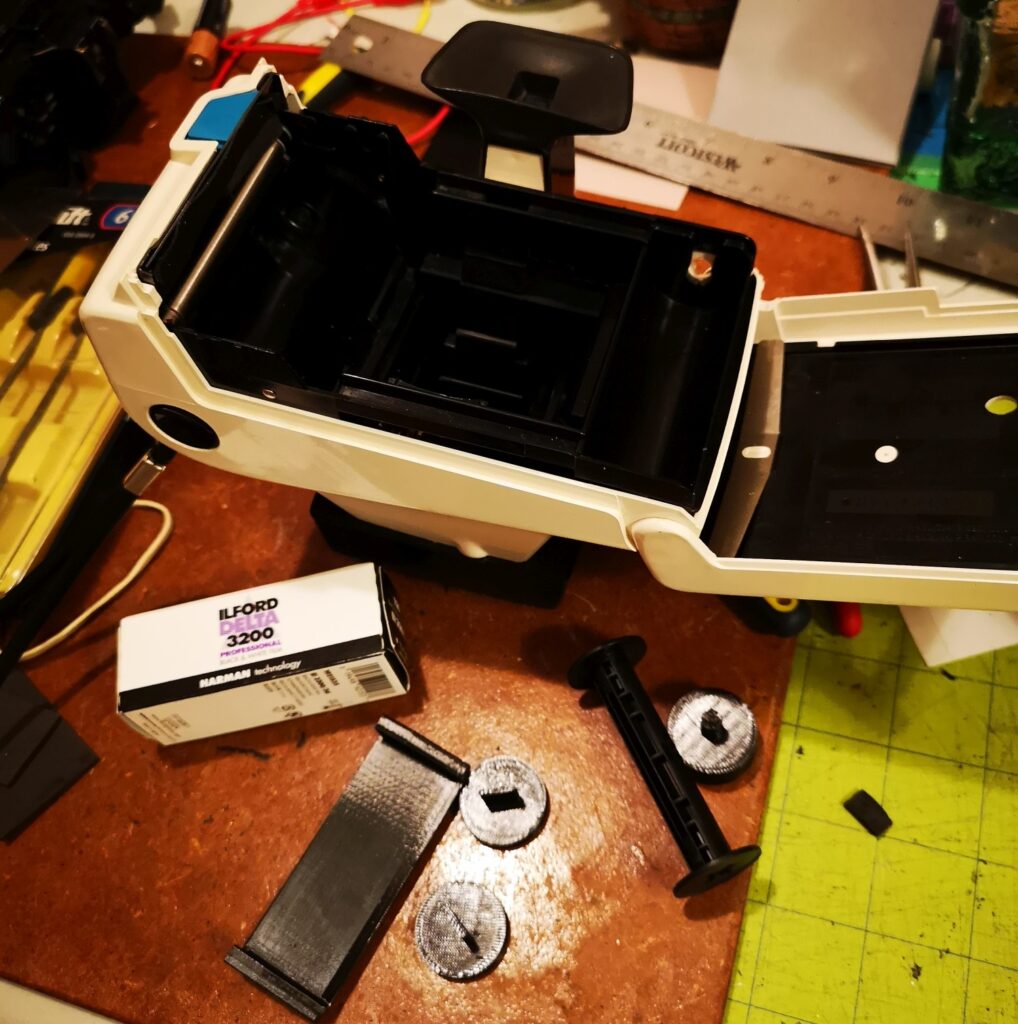
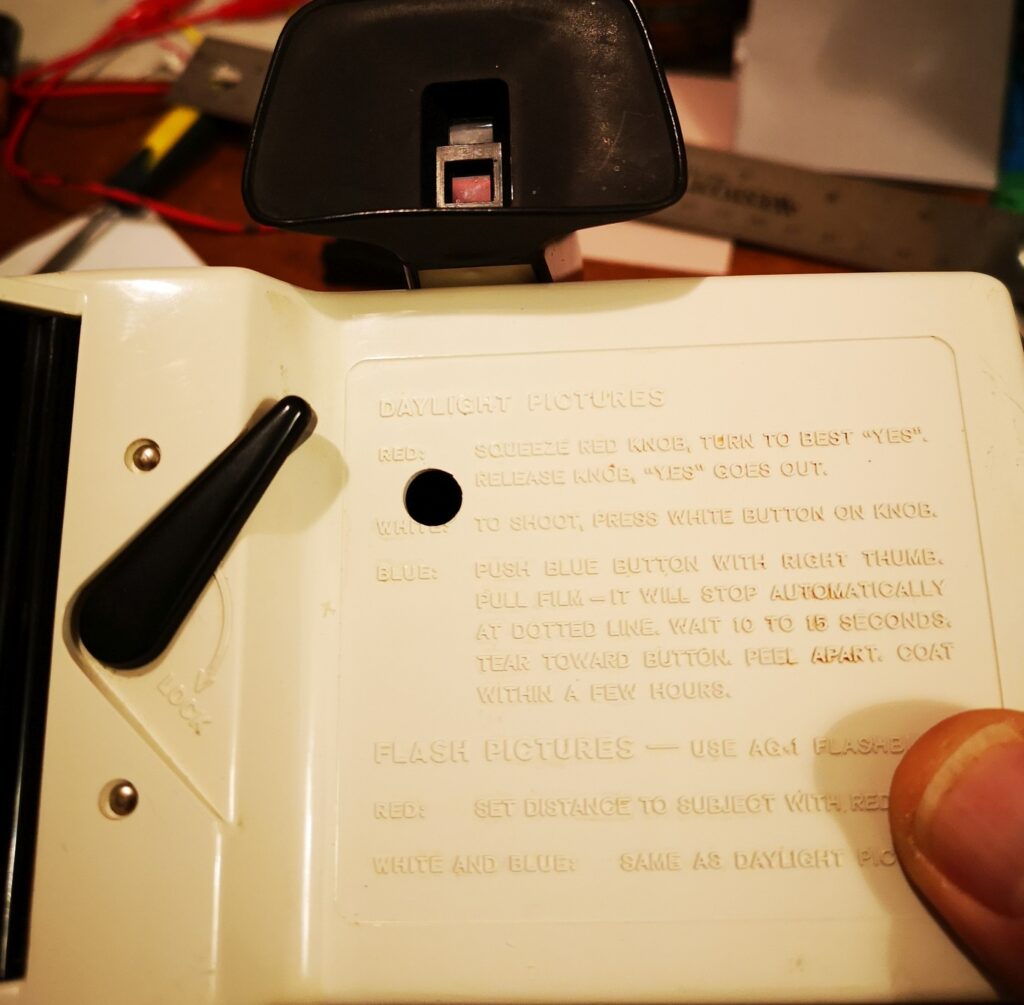
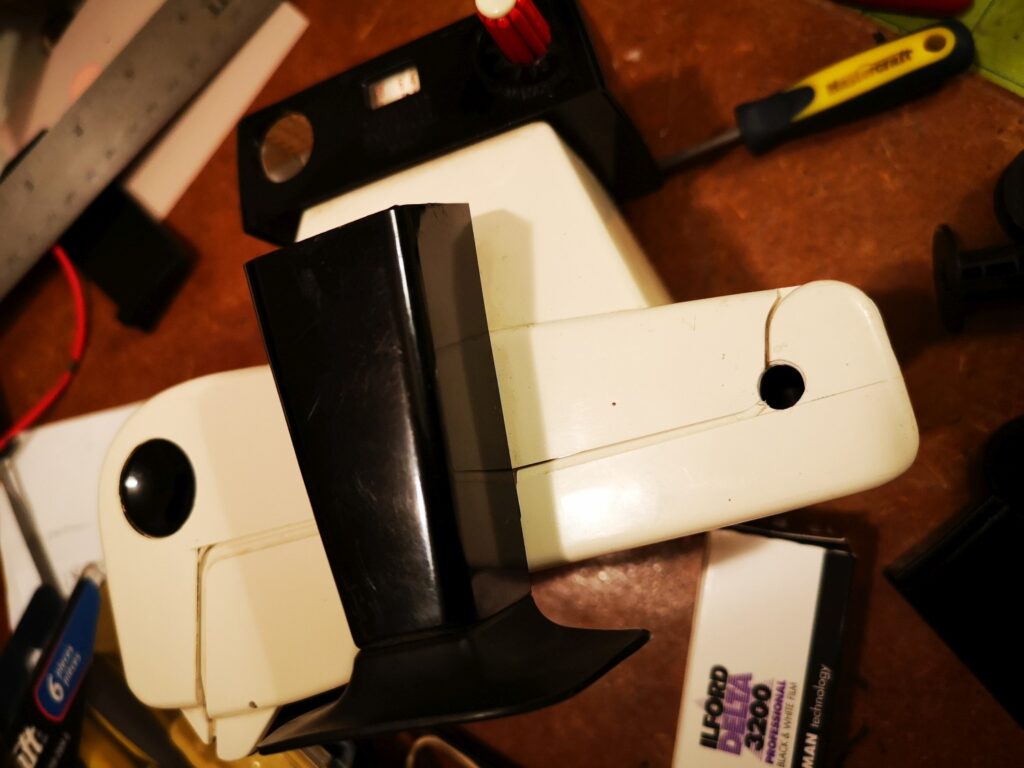
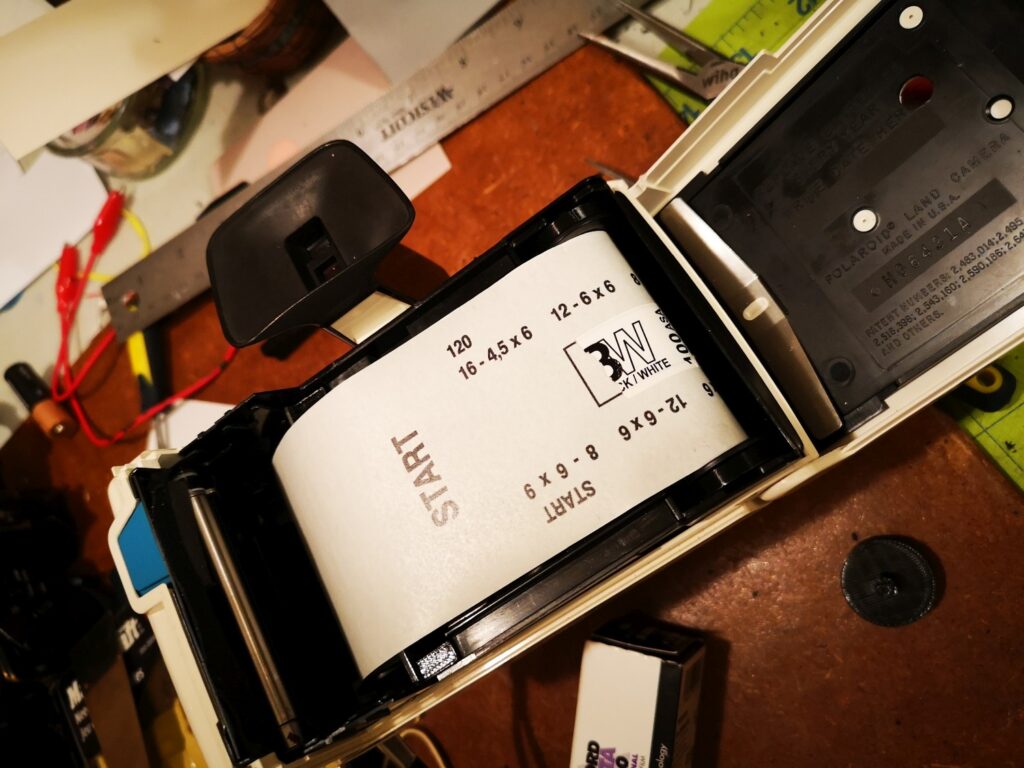
What a unique camera to use! It was fun going back in time with that Swinger jingle running through my head, swinging the camera by the wrist strap, squeezing the shutter knob, snapping photos and winding to the next shot. After the last photo, I rushed home and developed the film in D-76. I found out that this is not the best developer to use with this film, as it produced fairly thin negatives, but the pictures turned out OK! Only one double exposure and one picture with lots of flare from the sun. Instead of scanning these negatives, I decided to contact print them, just to see what it was like to hold a Swinger sized photo. Ok, they’re kind of small, but perfect wallet sized photos, similar in size to Instax mini pics.
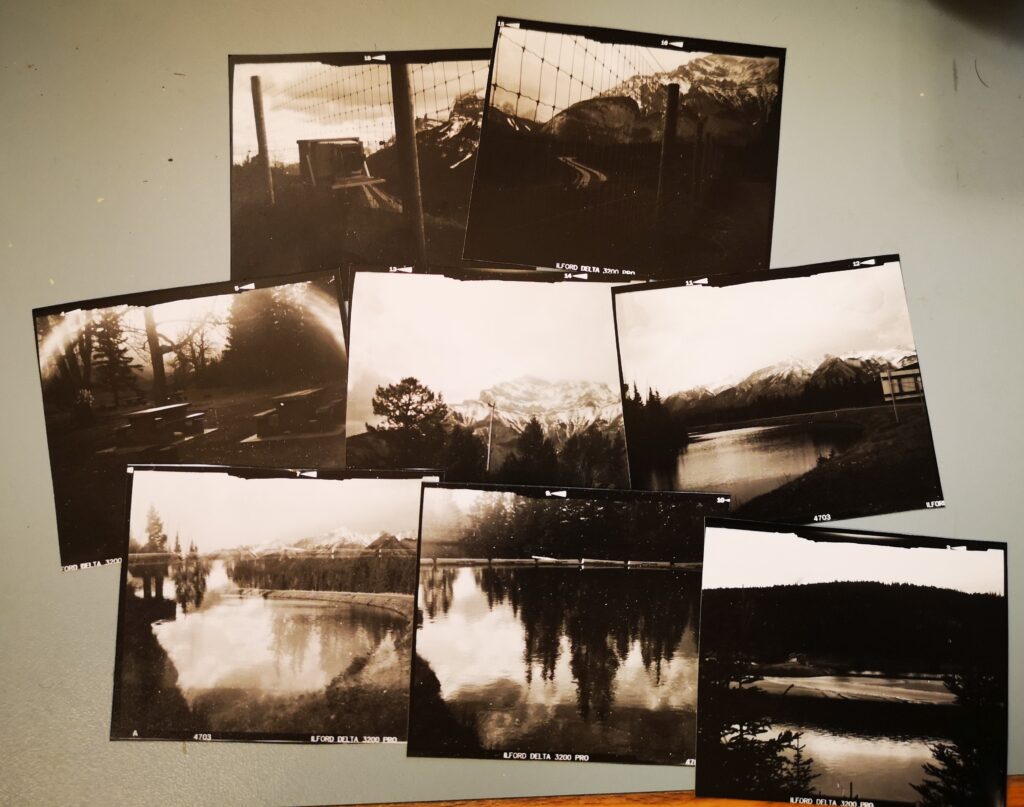
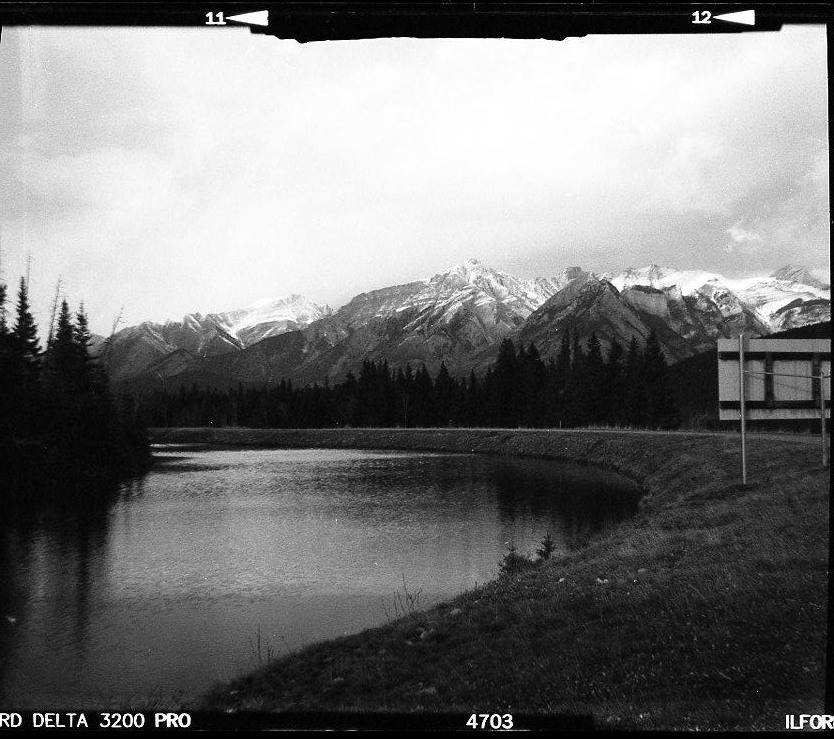
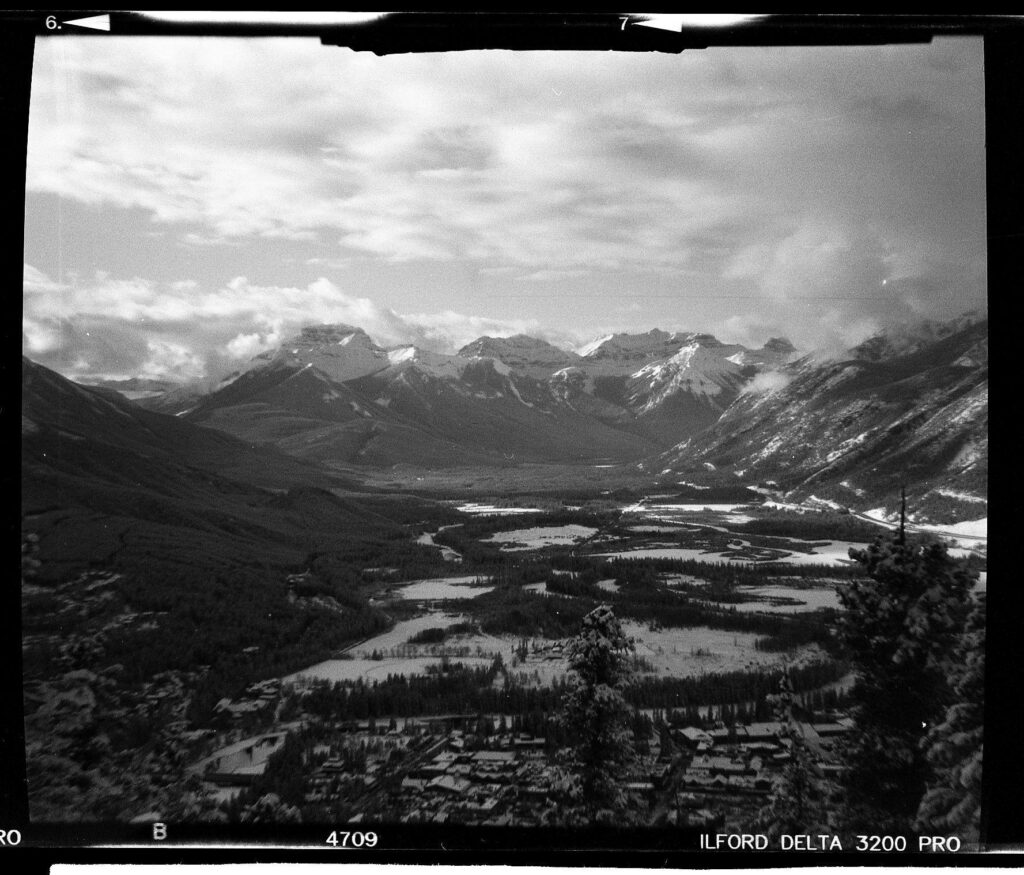
It’s a little limiting to only be able to shoot photos outdoors, so I had to see whether I could get the flash to work. It uses AG-1 flashbulbs, which I don’t have, but I have a lot of flash cubes, which have AG-1 bulbs in them. So I disassembled a flashcube, quickly jerry-rigged an adapter to plug into the Swinger flash socket, plugged in a bulb and the flash worked. I later 3D printed an adapter to plug into the Swinger which accepts a flashcube which can be downloaded at Polaroid Swinger AG-1 to flashcube adapter. The main challenge with using the flash is estimating the distance to the subject. This needs to be set on the camera to control the aperture, otherwise the exposure won’t be correct. A test flash photo exposed the photo perfectly, and it was also in focus – probably because the closer you set the distance, the smaller the aperture, and greater the depth of field. In theory, you can focus as close as 2 feet, though I haven’t tested if it’s in focus that close. 5 feet seems to focus well.
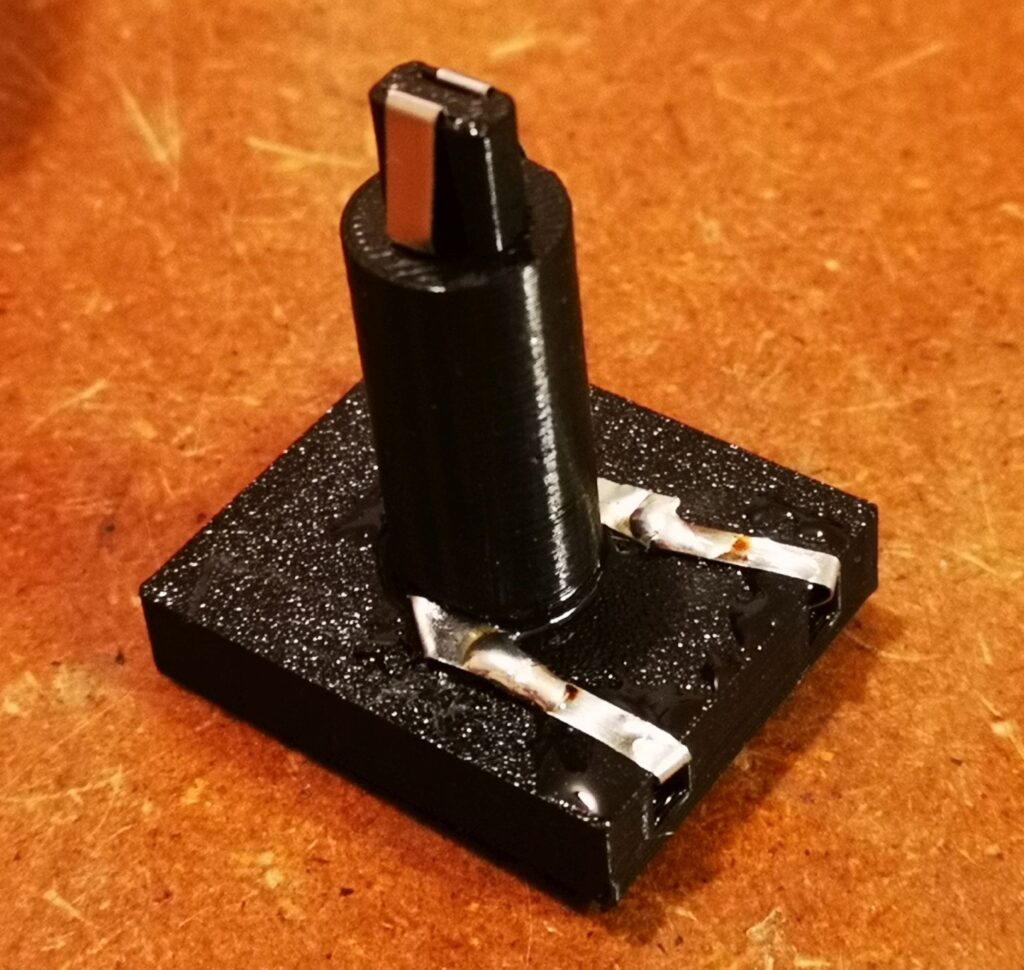
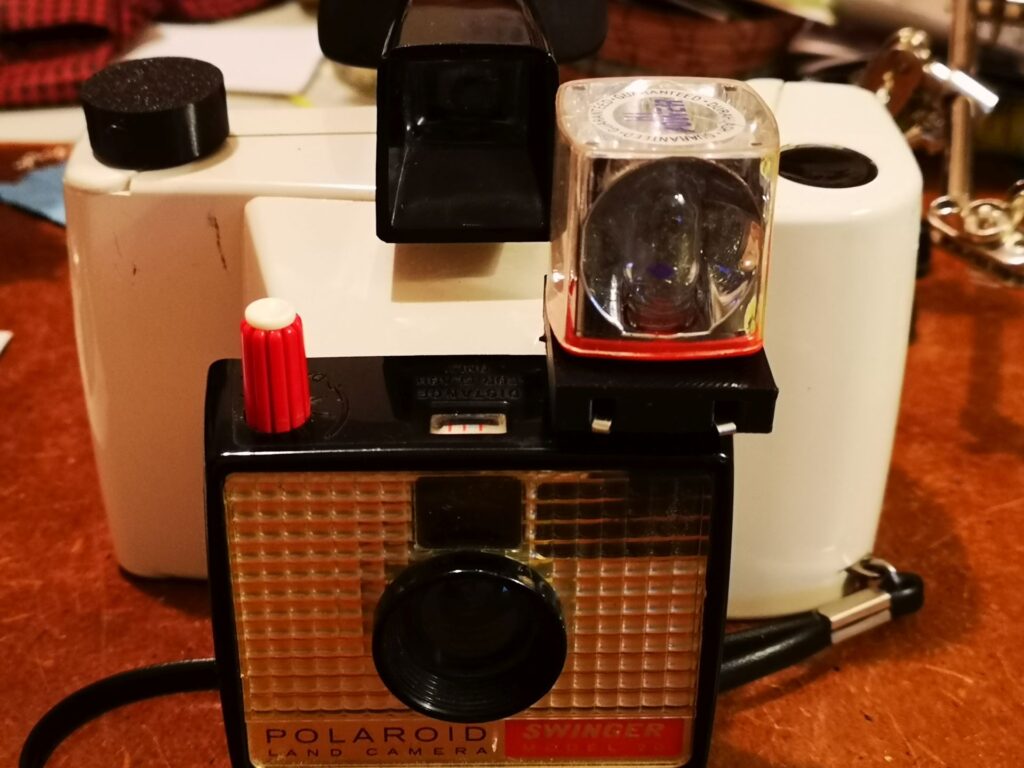
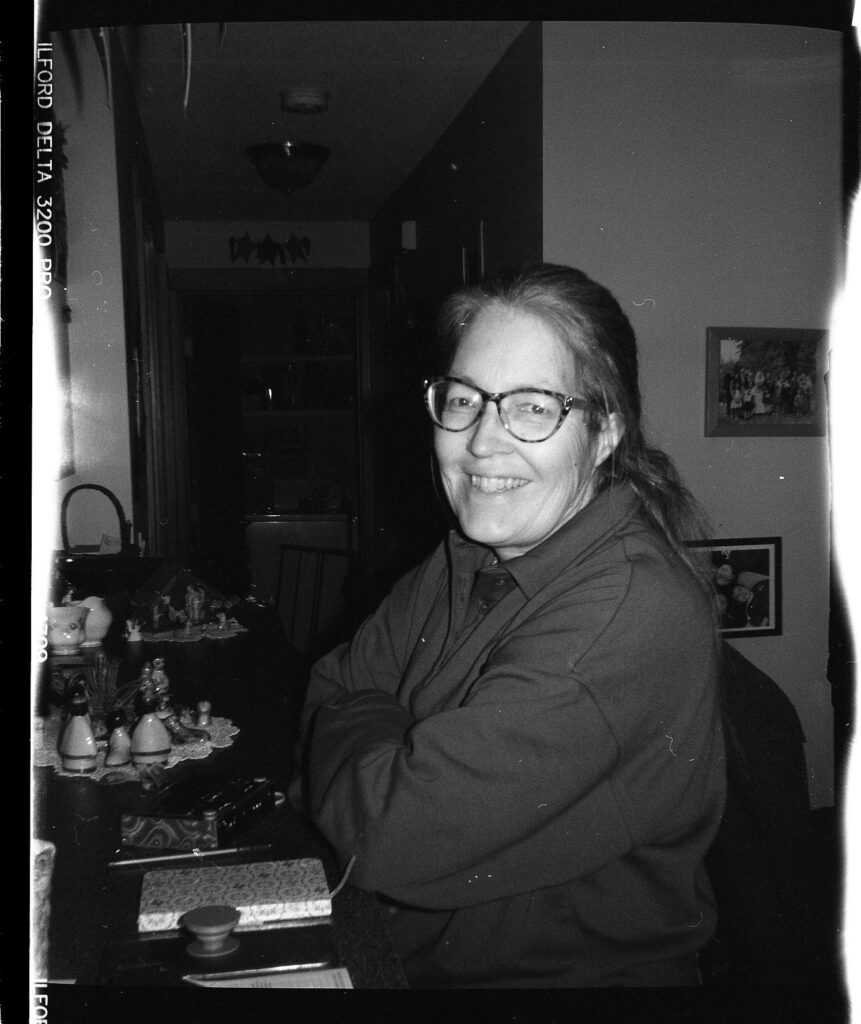
I came away impressed with this simple Polaroid Swinger. Shooting with 120 film gives you 2×3 contact prints, as well as the ability to enlarge your photo. And, although the lens has just a single plastic element, it performs well for this type of camera, except for the flare from shooting into the sun. I realize that using roll film goes totally against the original idea for this camera – to see the picture right away. But maybe it’s OK to delay some gratification and have fun with this camera which is unlike most film cameras. So dig out that Swinger you’ve been saving in the attic and get it to swing again! Check out the instructions on my website (The Swinger 120 6X8 roll film conversion ), download the 3d files, and even if you don’t have a 3D printer, send the files to a service such as Cloudcraft or your local library (if they have 3D printing services). Then get out your drill and start hacking!
More info:
Share this post:
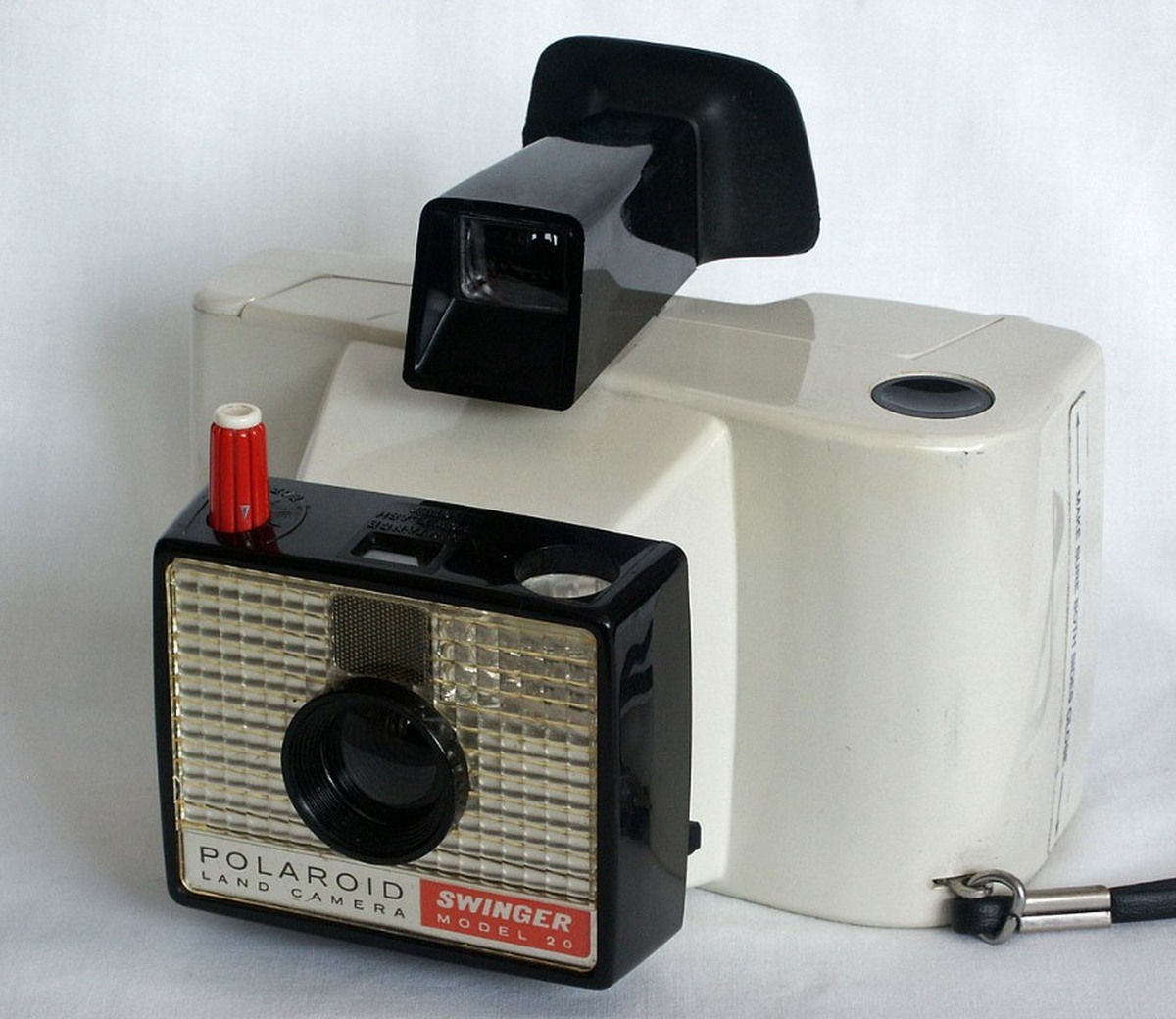
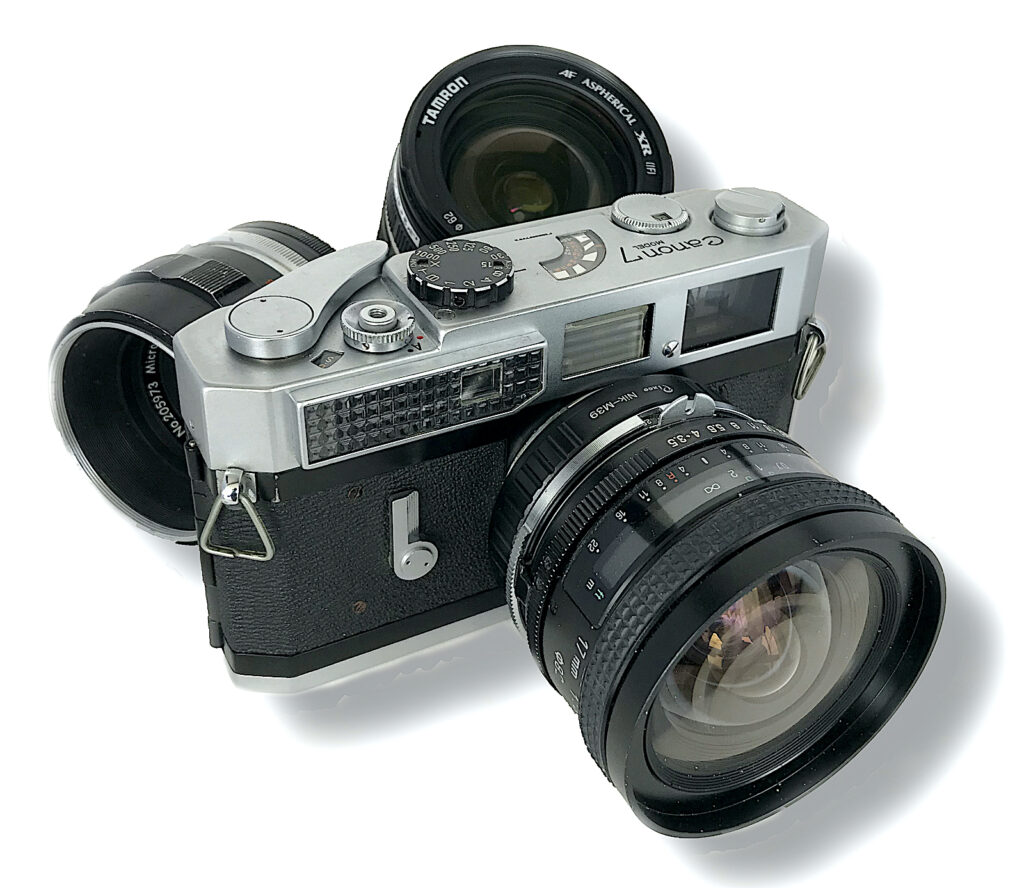
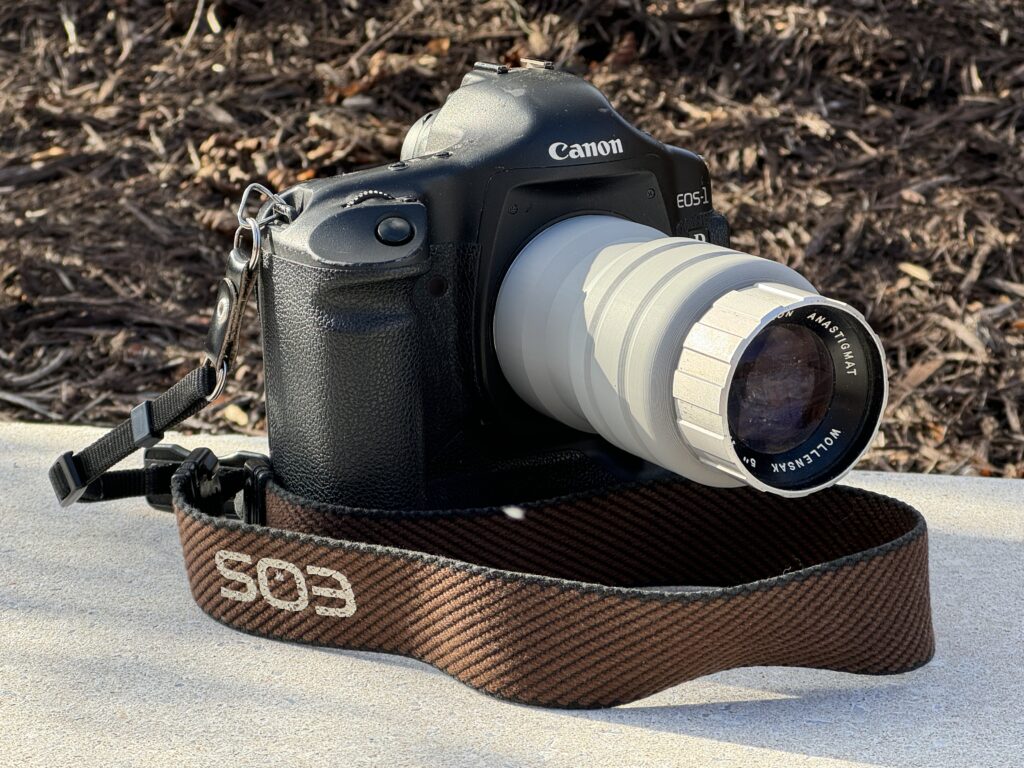
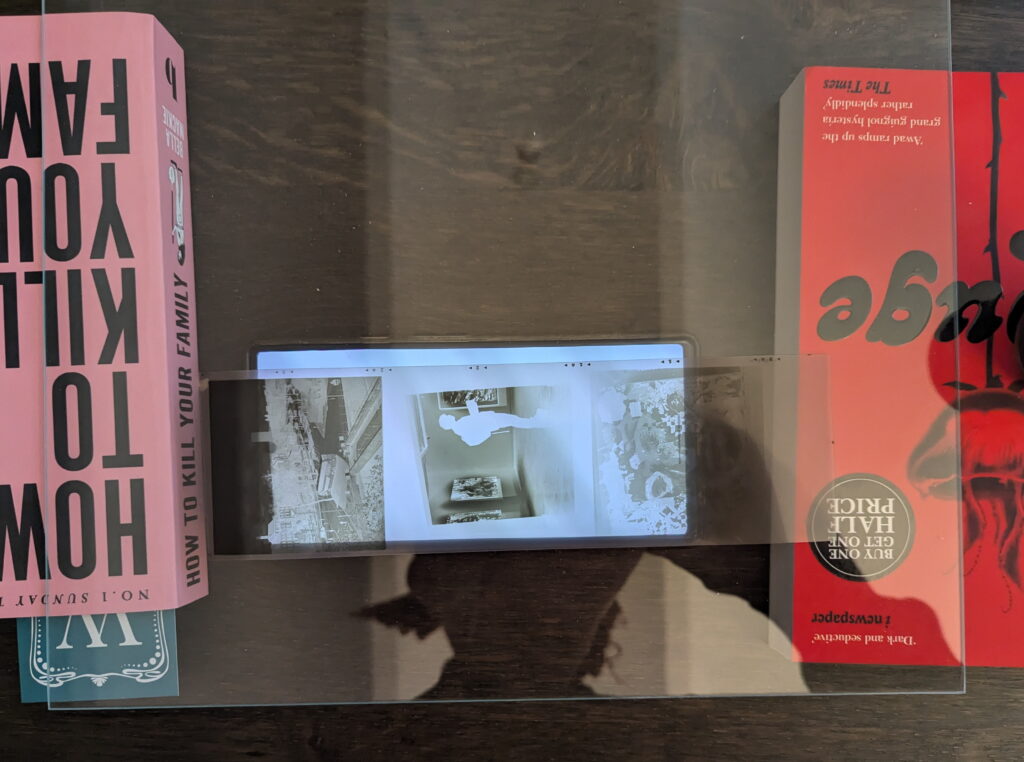
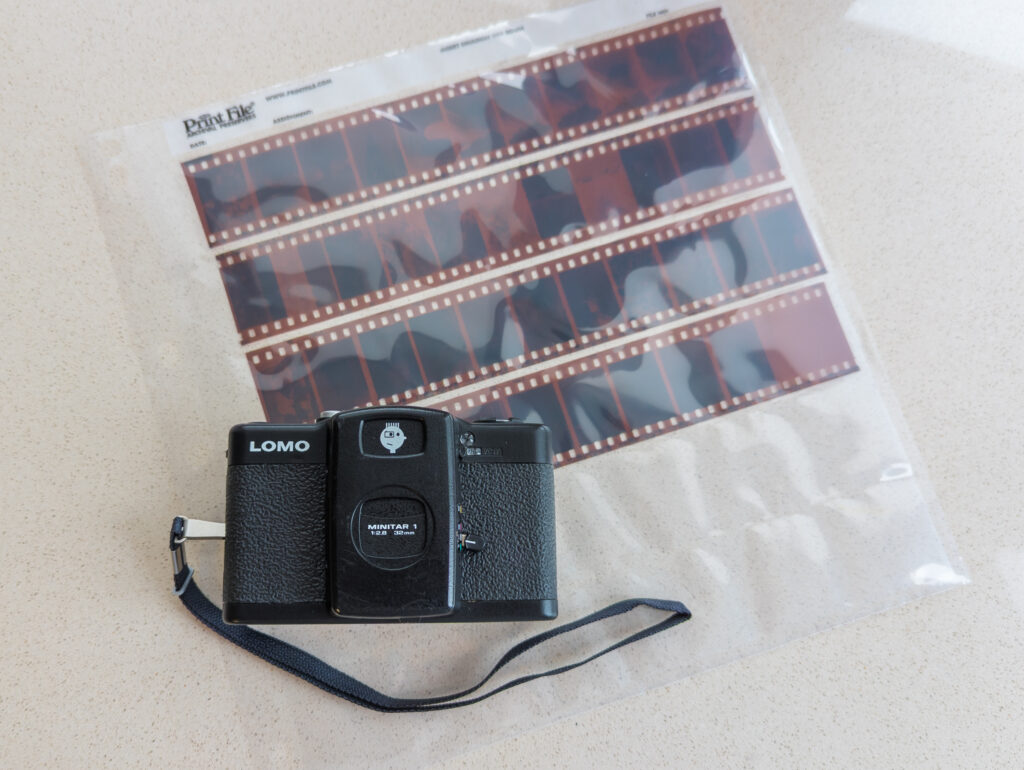




Comments
Michael Zwicky-Ross on Polaroid Swinger – Modification for use with 120 Film
Comment posted: 11/07/2024
Duncan on Polaroid Swinger – Modification for use with 120 Film
Comment posted: 11/07/2024
I wouldn't have thought it possible to get something like 120 accommodated in it, but there you go.
Looks like a fine set of pics too.
Paul Quellin on Polaroid Swinger – Modification for use with 120 Film
Comment posted: 11/07/2024
Comment posted: 11/07/2024
Jeffery Luhn on Polaroid Swinger – Modification for use with 120 Film
Comment posted: 11/07/2024
James on Polaroid Swinger – Modification for use with 120 Film
Comment posted: 11/07/2024
Comment posted: 11/07/2024
Gary Smith on Polaroid Swinger – Modification for use with 120 Film
Comment posted: 11/07/2024
Swing it up, it says YES.
Amazing to think you'd take the time to modify a Swinger. Results look fine!
Nice article,
Comment posted: 11/07/2024
Dave Powell on Polaroid Swinger – Modification for use with 120 Film
Comment posted: 11/07/2024
Steviemac on Polaroid Swinger – Modification for use with 120 Film
Comment posted: 11/07/2024
Tony Warren on Polaroid Swinger – Modification for use with 120 Film
Comment posted: 11/07/2024